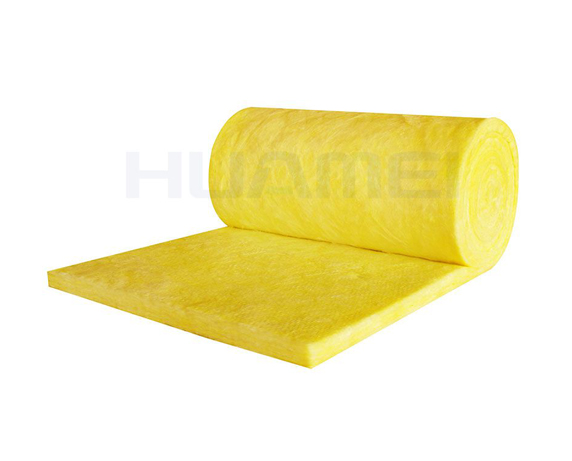E-mail: marketing@hbhuamei.com
Glass wool is the most commonly used insulation material in homes and commercial buildings worldwide. Glass wool is mainly made from recycled glass. The glass is melted in a furnace and then sent to a spinning machine to create fibers. The glass wool fibers create millions of tiny air pockets which trap air. The air bubbles make glass wool a poor conductor of heat, an important requirement for effective insulation wool.
Centrifugal glass wool is divided into glass wool boards and blankets. It was the best material used for the insulation and sound absorption of steel structures. It mainly includes a bare blanket and a blanket with a foil-clad cover. They are widely used in industrial plants, warehouses, public facilities, exhibition centers, shopping centers, cold stores, and a variety of indoor playgrounds, sports grounds, and other buildings.
In uninsulated walls, the external walls absorb radiant heat from the sun and radiate this heat through the plasterboard to the internal living areas of the home... In winter this is reversed as the warm indoor air passes through the plasterboard and outside the home.
However, if your walls are insulated, this heat gain and loss can be significantly reduced. Insulation of external walls means that hot air will circulate through the air cavity and thus lose energy. What is left will be absorbed by the insulation - the amount of heat absorbed depends on the R-value (resistance value) of the insulation installed. A small amount of heat will then be transferred to the living space. Again, in winter, this process is reversed to keep your precious warmth in your home.

Centrifugal Glass Wool
A fully insulated home is the most cost-effective way to improve the comfort and energy efficiency of your home and save on heating and cooling costs. The best time to insulate is at the time of construction.
There are several places where it is recommended to install insulation in your new home, including
External walls: Internal walls, including those between the home and any outbuildings (such as garages)
Between floors of a duplex home: Under the floor of a house in a home built from the ground up
Around water pipes: It is important to note that existing houses can be insulated in the following locations.
The ceiling of the house: Under the floor of the house when it is built, suspended from the ground and accessible in that area.
Around water pipes: In some homes where ceiling insulation has been installed, filling the insulation with a higher R-value may increase the efficiency of heat loss or gain through the ceiling space.
When you are renovating, you may need to consider insulating your home. If you are moving or replacing internal walls, remember to add sound insulation to the wall cavity before replacing the plasterboard. It will help to reduce noise transfer between rooms and provide thermal benefits.
If a new external wall is being built, take the opportunity to add or upgrade the wall insulation. Wall insulation is the most difficult insulation to add once a home is built, so it is ideal to make the most of it during the renovation process.
If you want to get more information about the best glass wool, welcome to contact us today or request a quote.
Copyright © Huamei Energy-saving Technology Group Co., Ltd. All Rights Reserved | Sitemap | Privacy Policy
Insulation solutions LIST: Insulation solutions LIST